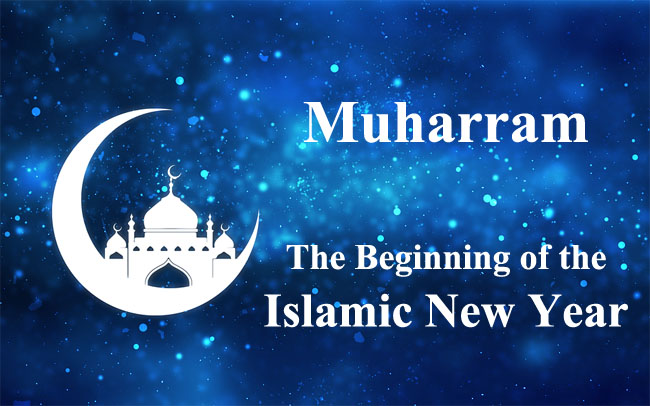Muharram | Islamic New Year

Islamic New Year also known as Hijri New Year or Arabic New Year is the new day for Hijri New Year and is observed on the day of Muharram, the first month in the Islamic Calendar.
The Hijri Calendar 1442 commences from the Holy month of Muharram and ends on the month of Zul-Hajj which is followed by Muslims worldwide.
Islamic celebrations dates vary from year to year as they are based on the lunar cycle, they observe there all festivals like Ramadan, Eid ul Fitr, Eid ul Adha, Rabi ul Awal, and Muharram ul Haraam based on the Islamic Calendar.
Islamic New Year or the month of Muharram begins after the new moon is seen at sunset which is one of the four holy months of the Islamic calendar.
In 2025 Muharram starts on 27th June, Friday.
Ramadan is the first and Muharram is the second most holy month in Islam, Muharram means “forbidden”, however, the tenth day is most significant when many followers keep fast on the ninth and tenth days of the month.
According to the legend popular among Shia Muslims, Husayn Ibn Ali was beheaded during the Battle of Karbala on the tenth day of Muharram. Husayn Ibn Ali is an important figure in the Muslim religion and is believed to be a member of Muhammad’s household.
The New Year also marks the emigration of Muhammad from Mecca to Medina, which was known as the Hijrah, and gives the first day of the year its name.
How Muharram is celebrated
New Year represents a period for self-reflection and historical awareness. Prayers and fasting are done on the tenth day of Muharram in mosques or private homes.
As is evident, different factions of the Muslim community observe this day differently. While for Sunni Muslims, it is a day of celebration, for Shia Muslims, it is a day of mourning.
Muharram is primarily an Islamic holiday but people of other religions may also take part in or observe the Muharram activities in India.
The Tenth day of Muharram is gazetted holiday in India, large parades and marches are held.






